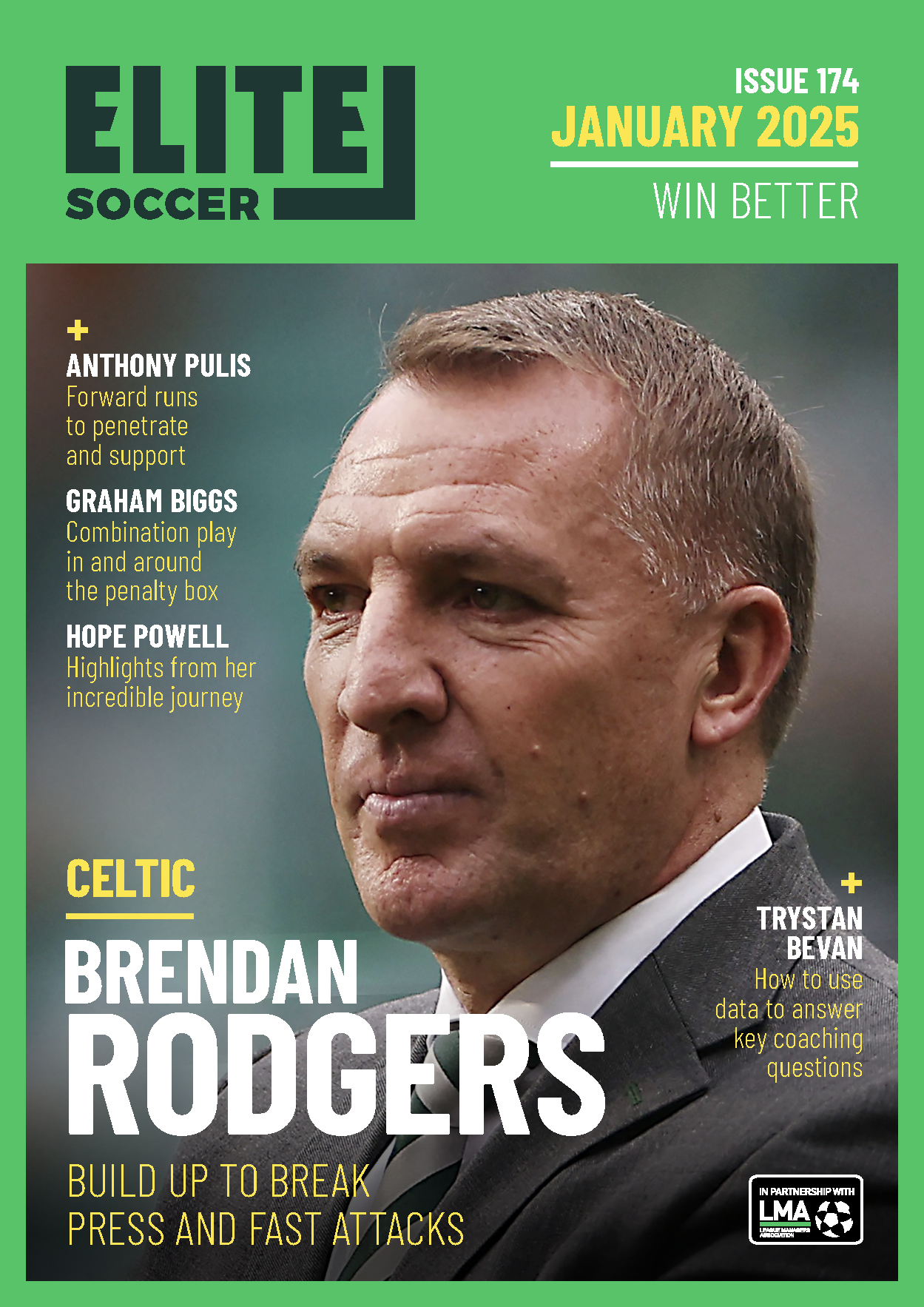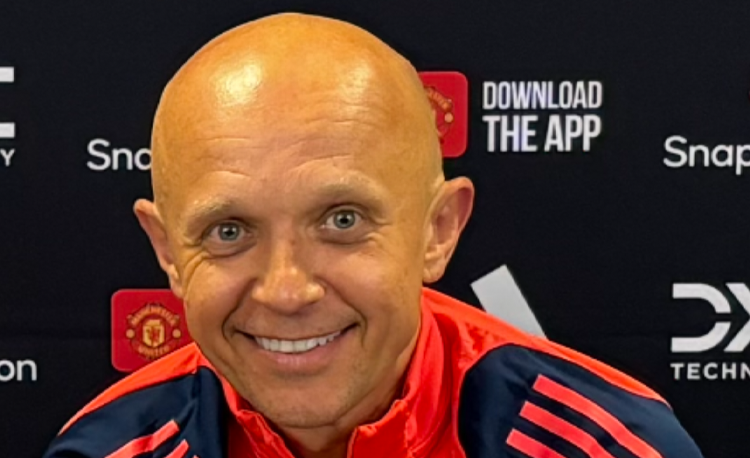You are viewing 1 of your 1 free articles
Counter-attacking and transitions
This session is about counter-attacking with pace on the first phase, decision-making and game-related play thereafter. It is match-realistic and game-related for all positions. So in attacking play we want to see shots on goal, with movement to create or score. In terms of defending play, this is about defending crosses into the box, so players have to ask if they defend space or the man.
| Area | Half-pitch or half-pitch plus 18yds |
| Equipment | Balls, discs, goals |
| No. of Players | Up to 10v10 |
| Session Time | 30mins |
This session is about counter-attacking with pace on the first phase, decision-making and game-related play thereafter.
It is match-realistic and game-related for all positions. So in attacking play we want to see shots on goal, with movement to create or score. In terms of defending play, this is about defending crosses into the box, so players have to ask if they defend space or the man.
We also want to keep a close eye on distances – we always work on the compactness of the back four, whilst being aware of the need to stop crosses, with technical defending techniques also visible.
We would typically run this session on a Tuesday or Thursday, for the reason that it is done at a high intensity and needs to be undertaken well away from match day. We wouldn’t necessarily introduce it every week, but regularly so that players keep hold of the benefits of quick counter-attacking.
What do I get the players to do?
Phase one (finishing and crossing)
We set this up as 5v5. It is characterised by two shots on goal by the two blue players in the red squares (1a), followed by a cross that will lead to phase 2 (1b).
The yellow players must defend this – four in the standard way and the other staying out ready to start the counter-attack (something that the deepest blue player needs to be aware of). Sure enough, if the keeper catches the ball, yellows will look to counter-attack, trying to finish with an attempt on goal. The ball for the counter-attack can also be provided by the coach (if the cross is misplaced, for instance).
This first phase is vital and we must see shots hitting the target, accuracy of passes and players attacking the key areas (namely near and far posts).
1a
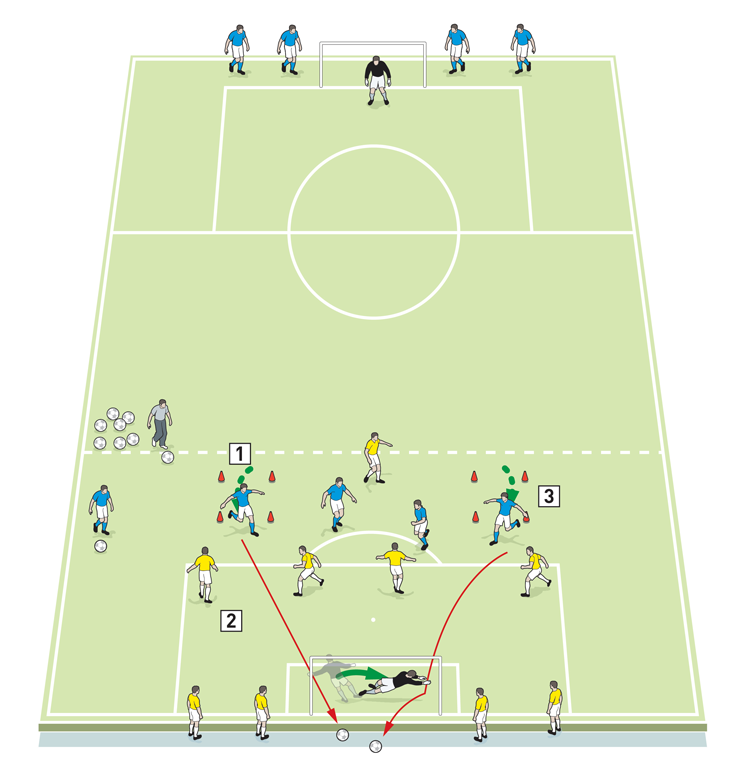
2. Yellows press
3. A shot must come from a blue in a square
1b
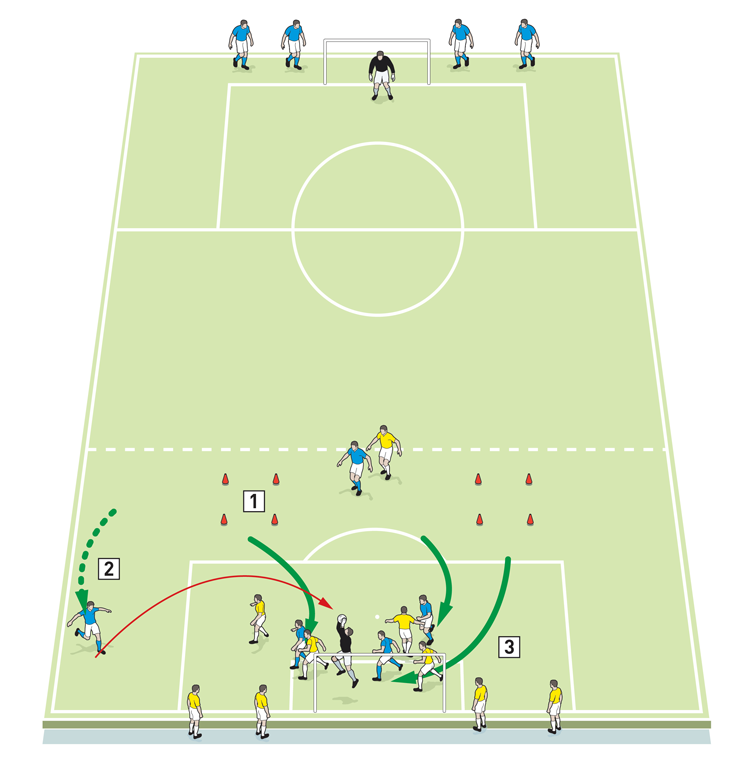
2. A cross is sent in from the flank
3. The keeper claims the ball
Phase two (5v5)
After crossing the ball, if the defending five assume possession they will then counter-attack the existing five attacking players, looking to play to a finish at the other end (2).
In other cases (for instance, when a goal is scored), a coach on the sidelines can decide to play the ball into the five players to counter-attack, or give the blues another attack.
2
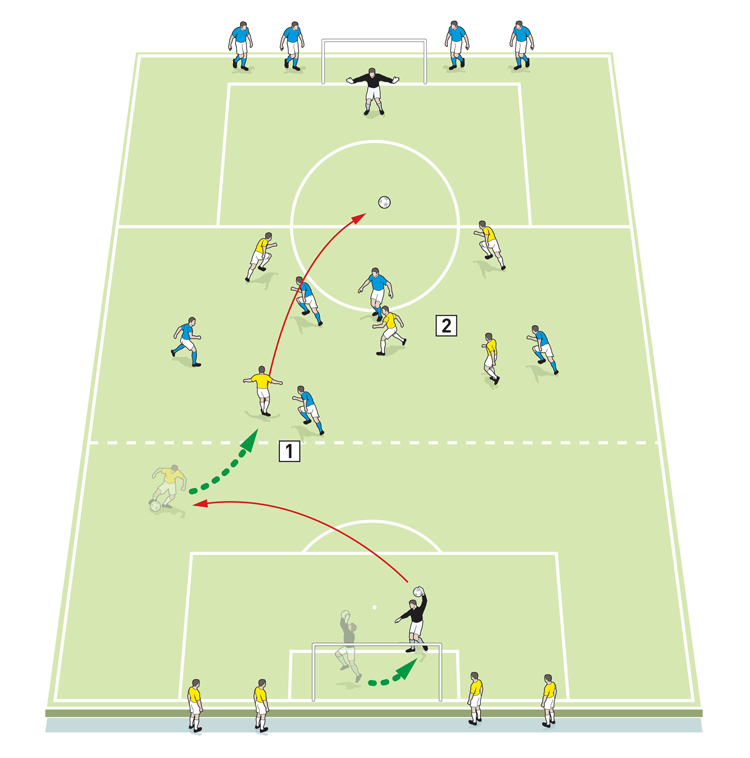
2. Yellows break quickly through the thirds
Phase three (10v5)
Once the 5v5 has been started, we will attend to another development of this phase, as shown (3). Indeed, the first counter-attack attempt will end either with a goal or an interception. So in either of these two phases, five more players can now join the five already involved in defending to create a 10v5 counter-attack. This phase will end with a shot on target or an interception by the (new) defending five.
3
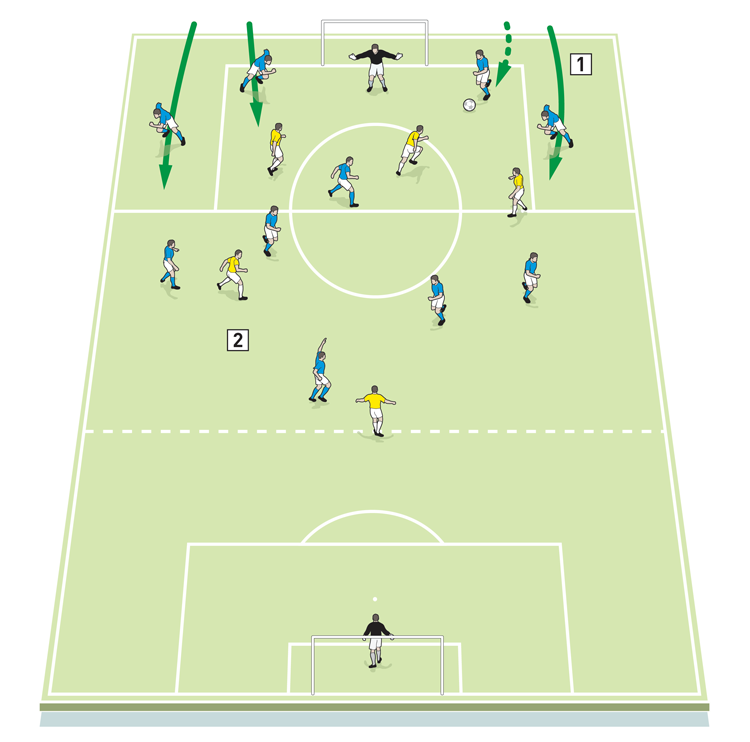
2. Yellows must quickly regroup and retreat as they are being counter-attacked at pace
Phase four (10v10)
As a further progression, the game will be continued as a 10v10 in the same space used for the initial 5v5 due to the fact that the other five players will join the previous five who were defending (4). The intensity during this phase should be at a maximum; we’re looking for continuous counter-attacks and quick phases of play.
4
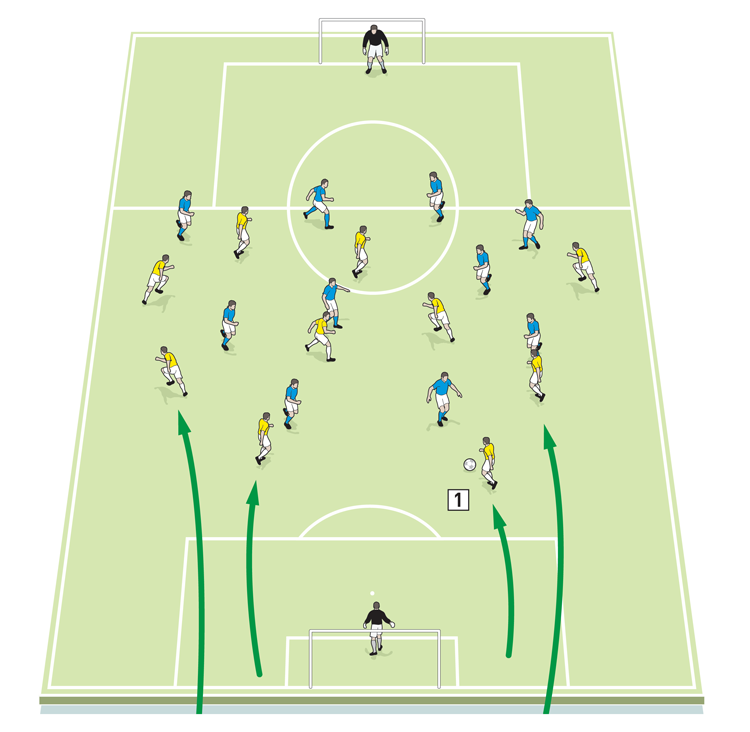
What are the key things to look out for?
We must see a positive attitude to counter-attacking, with any break conducted with accuracy of passing at its core. Players must be smart in their decision-making when looking to work an advantage, and we also want to see a good tempo to the session, with the match being game-realistic and at usual competitive tempo.
Game understanding is vital, so players must be aware of transitions between balance and cover, never overcompensating on either.
In addition, we want to see communication and organisation performed at the highest level, compactness when defending and the awareness of triggers in terms of when to press (such as a bad touch or poor weight of pass by an opponent).
How would you put this into a game situation?
This can easily build into a 10v10. When reaching this level we play for a specific time – 3-4mins, for instance – with 2mins rest in between.
Related Files
More like this
Editor's Picks
Using the goalkeeper in build-up play
Pressing principles
Intensive boxes drill with goals
Penetrating the final third
Creating and finishing
My philosophy
Pressing initiation
Compact team movement
Defensive organisation
Coaches' Testimonials

Alan Pardew

Arsène Wenger

Brendan Rodgers

Carlos Carvalhal

José Mourinho

Jürgen Klopp

Pep Guardiola

Roy Hodgson

Sir Alex Ferguson

Steven Gerrard
Coaches' Testimonials

Gerald Kearney, Downtown Las Vegas Soccer Club

Paul Butler, Florida, USA

Rick Shields, Springboro, USA

Tony Green, Pierrefonds Titans, Quebec, Canada
Join the world's leading coaches and managers and discover for yourself one of the best kept secrets in coaching. No other training tool on the planet is written or read by the calibre of names you’ll find in Elite Soccer.
In a recent survey 92% of subscribers said Elite Soccer makes them more confident, 89% said it makes them a more effective coach and 91% said it makes them more inspired.
Get Monthly Inspiration
All the latest techniques and approaches
Since 2010 Elite Soccer has given subscribers exclusive insight into the training ground practices of the world’s best coaches. Published in partnership with the League Managers Association we have unparalleled access to the leading lights in the English leagues, as well as a host of international managers.
Elite Soccer exclusively features sessions written by the coaches themselves. There are no observed sessions and no sessions “in the style of”, just first-hand advice delivered direct to you from the coach.



